TLDR Photothermal biomodulated PRP extends hair graft viability by 2 hours compared to standard solutions.
The study investigated the use of photothermal biomodulated platelet-rich plasma (PRP) as a preservation solution for hair grafts, aiming to extend their viability before transplantation. Conducted with 28 male volunteers, the research found that hair grafts preserved in MCT Plasma/PBS remained viable for 8 hours, 2 hours longer than those preserved in standard solutions like saline solution (SS) or Ringer's lactate (RL). This enhanced viability is attributed to the improved properties of PRP through photothermal biostimulation, which increases the release of growth factors and cytokines. The findings suggest that preconditioned PRP can effectively mimic the scalp environment, making it a promising option for adapting preservation solutions to modern hair transplantation techniques. Further research is recommended to explore its potential benefits in clinical settings.
 1 citations
,
March 2023 in “International Journal of Trichology”
1 citations
,
March 2023 in “International Journal of Trichology” Platelet-rich plasma didn't increase hair length but may help keep hair follicles alive.
13 citations
,
June 2020 in “Plastic and reconstructive surgery. Global open” PRP preservation improves hair transplant results better than saline.
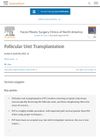 8 citations
,
April 2020 in “Facial Plastic Surgery Clinics of North America”
8 citations
,
April 2020 in “Facial Plastic Surgery Clinics of North America” Follicular Unit Transplantation is a reliable hair restoration method with a high success rate and minimal scarring.
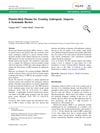 27 citations
,
June 2019 in “Aesthetic Plastic Surgery”
27 citations
,
June 2019 in “Aesthetic Plastic Surgery” Platelet-Rich Plasma (PRP) treatment may increase hair growth for genetic hair loss, but more research is needed to confirm this.
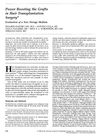 22 citations
,
December 1998 in “Dermatologic Surgery”
22 citations
,
December 1998 in “Dermatologic Surgery” A new storage solution may increase hair transplant graft survival.
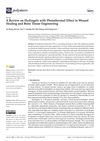 57 citations
,
June 2021 in “Polymers”
57 citations
,
June 2021 in “Polymers” Photothermal hydrogels are promising for infection control and tissue repair, and combining them with other treatments could improve results and lower costs.
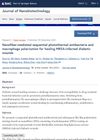 18 citations
,
December 2021 in “Journal of Nanobiotechnology”
18 citations
,
December 2021 in “Journal of Nanobiotechnology” The nanofibers effectively treated infected diabetic wounds by killing bacteria and aiding wound healing without toxicity.
10 citations
,
March 2024 in “Frontiers in Bioengineering and Biotechnology” Photothermal hydrogels can kill bacteria and help heal tissue using light-converted heat.
 September 2025 in “ACS Applied Materials & Interfaces”
September 2025 in “ACS Applied Materials & Interfaces” The hydrogel effectively heals diabetic wounds, closing over 90% within 7 days.
September 2025 in “OPAL (Open@LaTrobe) (La Trobe University)” The hydrogel effectively heals diabetic wounds and promotes hair growth.







